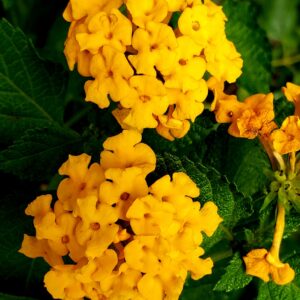How to Plant and Care for Hibiscus
Hibiscus does not take a lot of effort to care for; it simply needs to have certain conditions in order to thrive. Let’s take a look at a few suggestions for growing a healthy, happy hibiscus plant.
Type of Soil
Hibiscus likes to be planted in soil that is slightly acidic. If the soil in your garden is not acidic, you can attempt to increase the level by adding peat moss to your garden. When you plant the hibiscus, place them in the soil about two or three feet from each other; these plants may seem small now, but they will grow to be pretty large with time. In addition, do not plant these plants before the frost threat is over for the year to ensure that they survive the cold temperatures.
Watering Hibiscus
Hibiscus need moist soil to grow, but it also needs to be drained well. This is so that the roots are not sitting in a large amount of water, which can cause the roots to rot. If the plant is under-watered, then it is possible that the blooming process would stop, since this is a method to protect the roots of the plant. The best way to ensure that the plant will be getting adequate water is to use an irrigation system that will drain out any excess water.
The best location for a hibiscus plant is a location that is going to get direct sunlight for five to six hours a day. They will grow in partial sunlight, but at the expense of the blooms being produced. For optimal growth, the plant needs to have full sun as much as possible.
Temperature Requirements
A hibiscus plant will flourish the most in temperatures that remain between 60 degrees Fahrenheit and 90 degrees Fahrenheit. Once the temperatures start coming close to the 32 degree Fahrenheit mark, the plants must remain indoors so that the cold weather does not cause damage to the plant.
Pruning Hibiscus
Hibiscus plants do not need to be pruned, but with that being said, the plant will love the additional attention. If you are going to prune a hibiscus plant to rejuvenate its look, it should be done in early spring. This will stimulate the budding process and help the plant thrive throughout the summer months. If you happen to prune your hibiscus plants late in the season, do not trim the branches too far back because it can hinder the blooming process.
Fertilizing Hibiscus
When you fertilize your hibiscus plant, it is a good idea to utilize liquid fertilizer to ensure that it can be dispersed through the soil evenly. You will want a fertilizer that is high in potassium because it’s great for the growth of hibiscus plants, but you also want to avoid phosphorus because it is a mineral that can kill the hibiscus plant, especially if the mineral is accumulating in the soil. A great way to encourage growth in the plant is to add compost bark or worm castings to the soil once a year or more.





Reviews
There are no reviews yet.